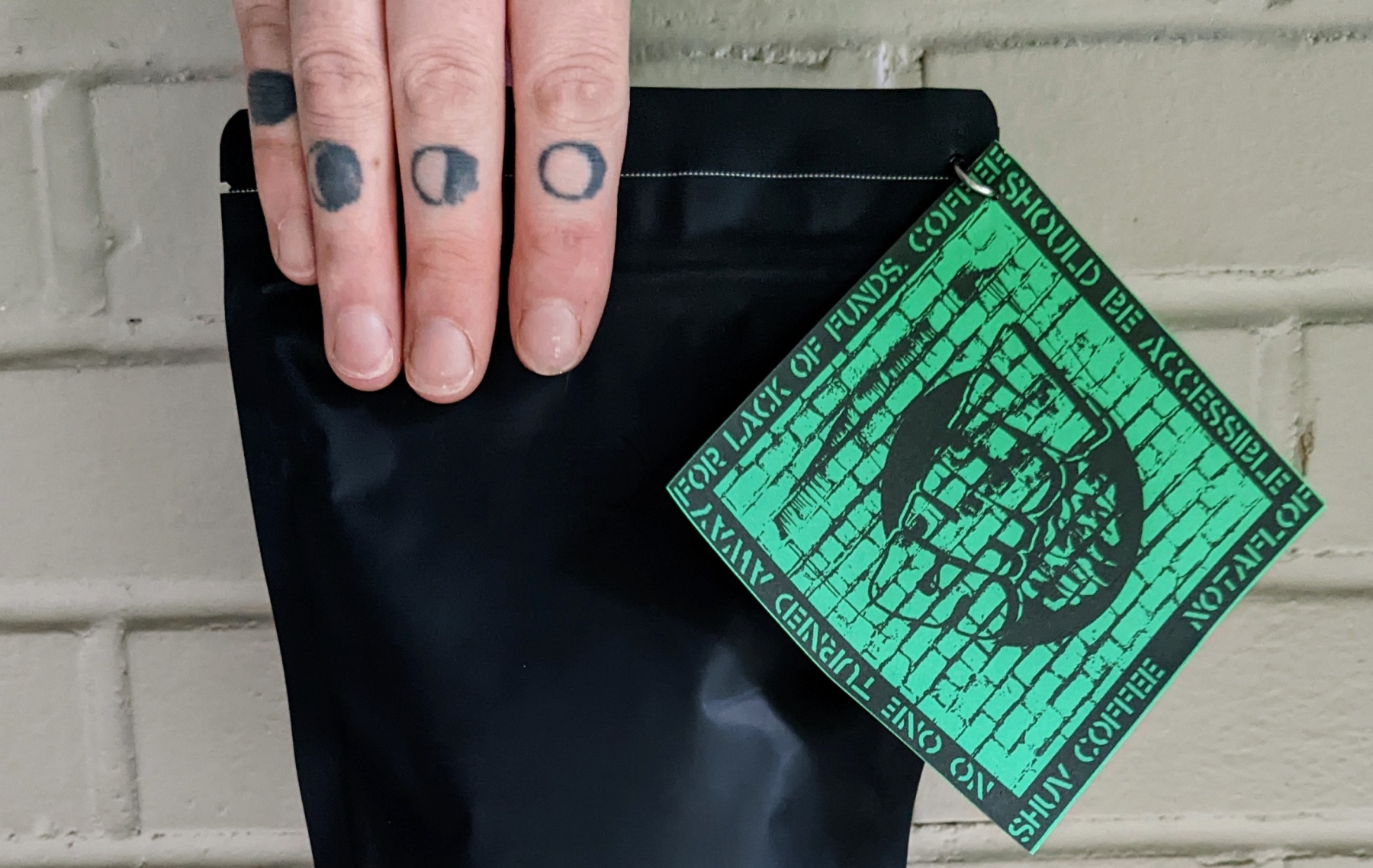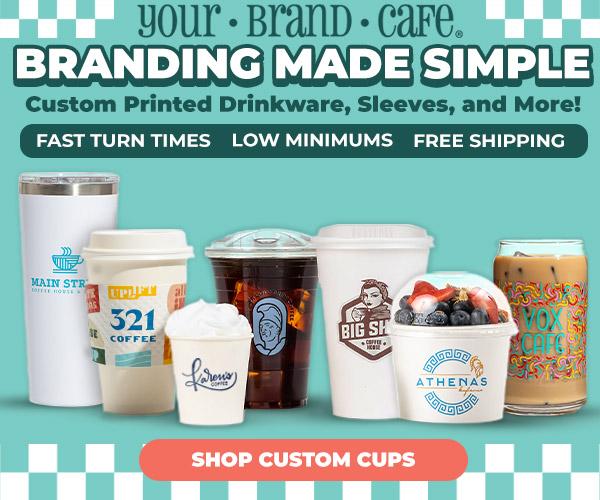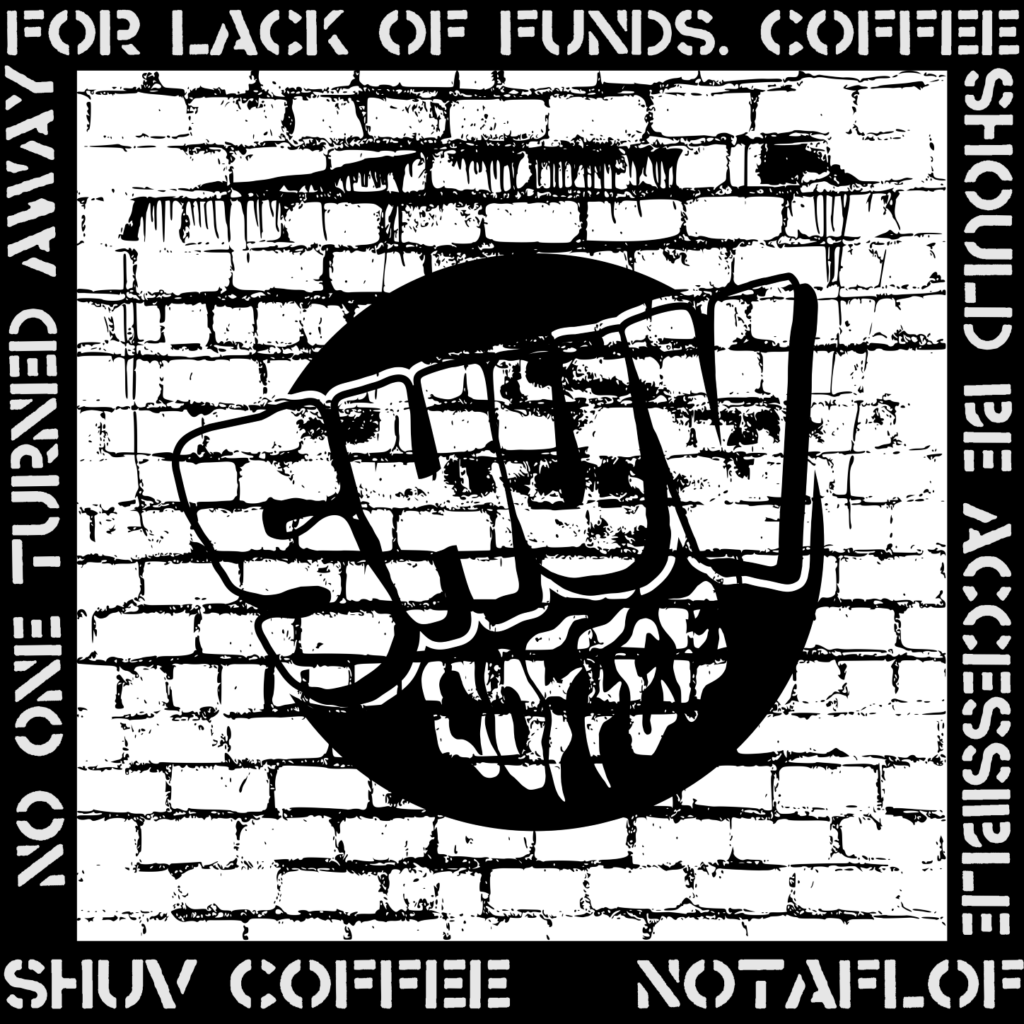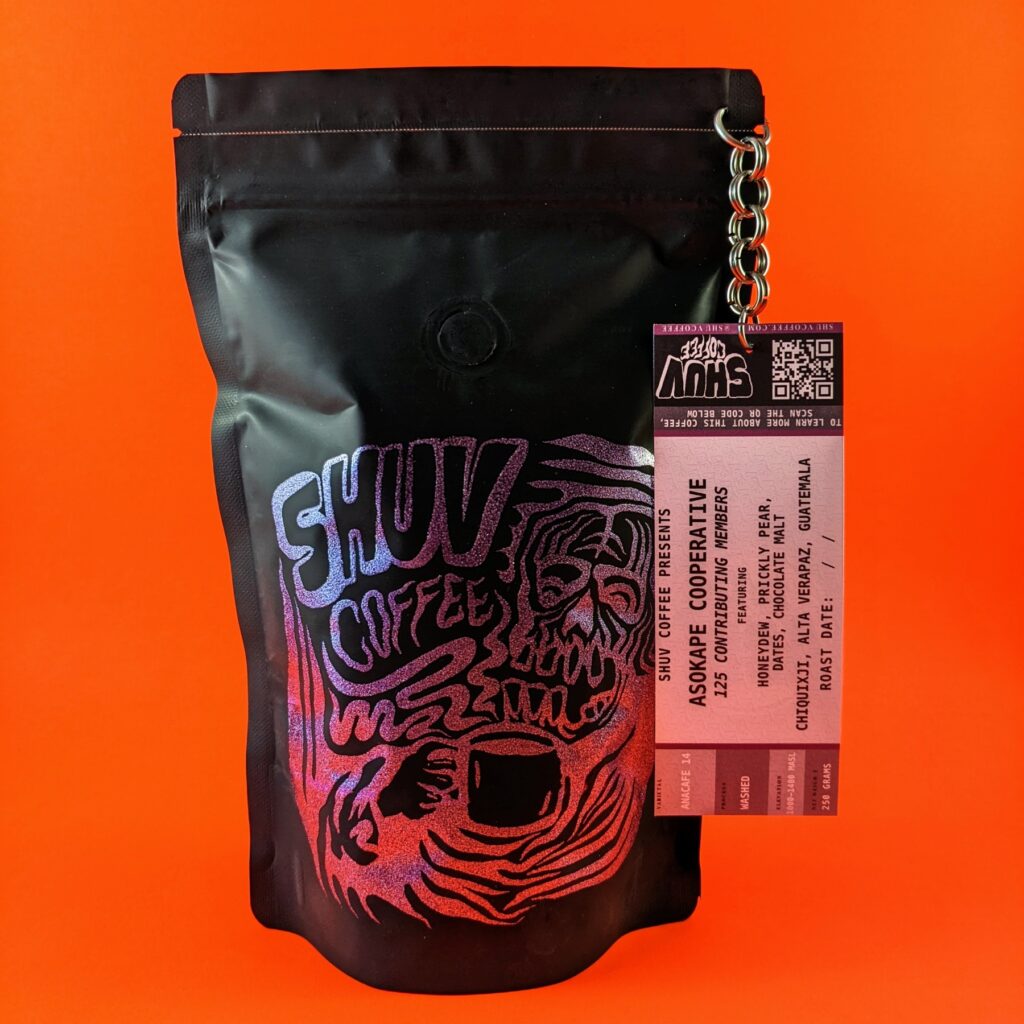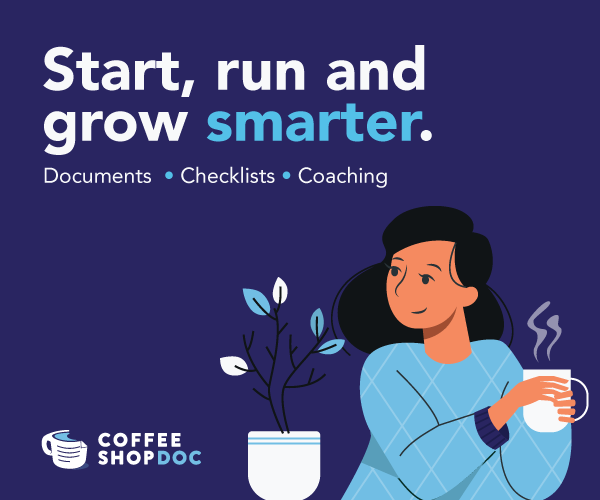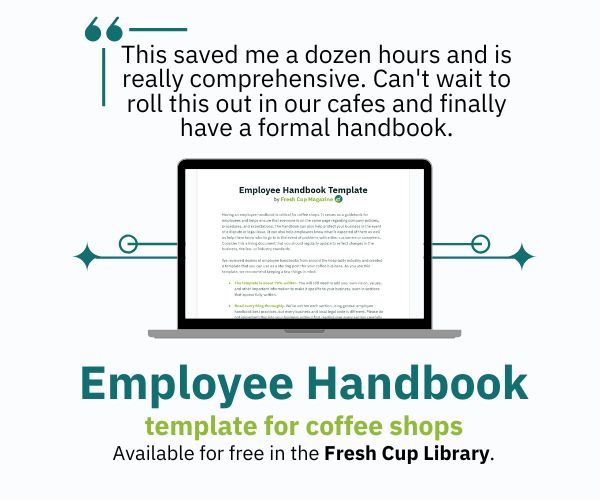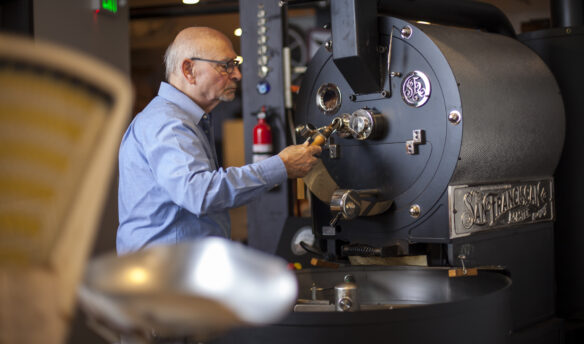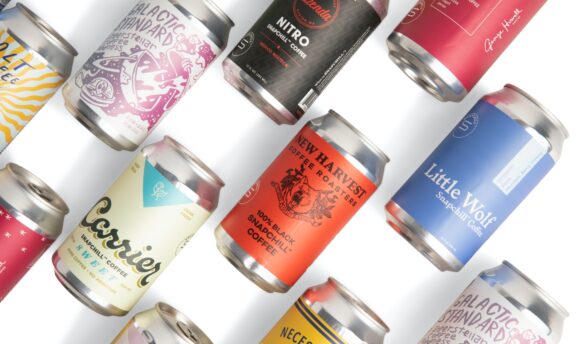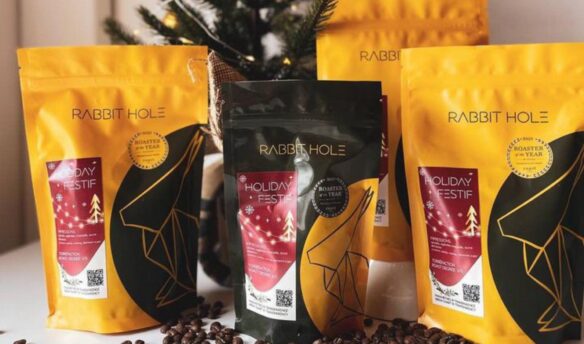In the current era of deepening inflation, coffee lovers—and even coffee workers—are having a more challenging time making ends meet. But coffee is more than just a stimulating beverage: it’s a ritual, an essential part of daily life for those who love it.
Enter sliding-scale coffee, an increasingly important trend. But when coffee companies are often just as tight on funds as consumers, how can they make sliding-scale coffee programs work?
Many great coffee companies offer sliding scale options on their products—Umeshiso and their sliding scale cupping spoons, for example. We asked Indianapolis-based roaster Shuv Coffee about their new NOTAFLOF (No One Turned Away For Lack Of Funds) coffee program. They shared how to make sliding-scale coffee work and how they hope to make coffee more communal and revolutionary.
Below is our conversation, lightly edited for clarity and length.
Can you tell me a little bit about yourselves?
Steven: My name is Steven Garcia! I’m co-owner and head of roasting, production, and wholesale for Shuv Coffee.
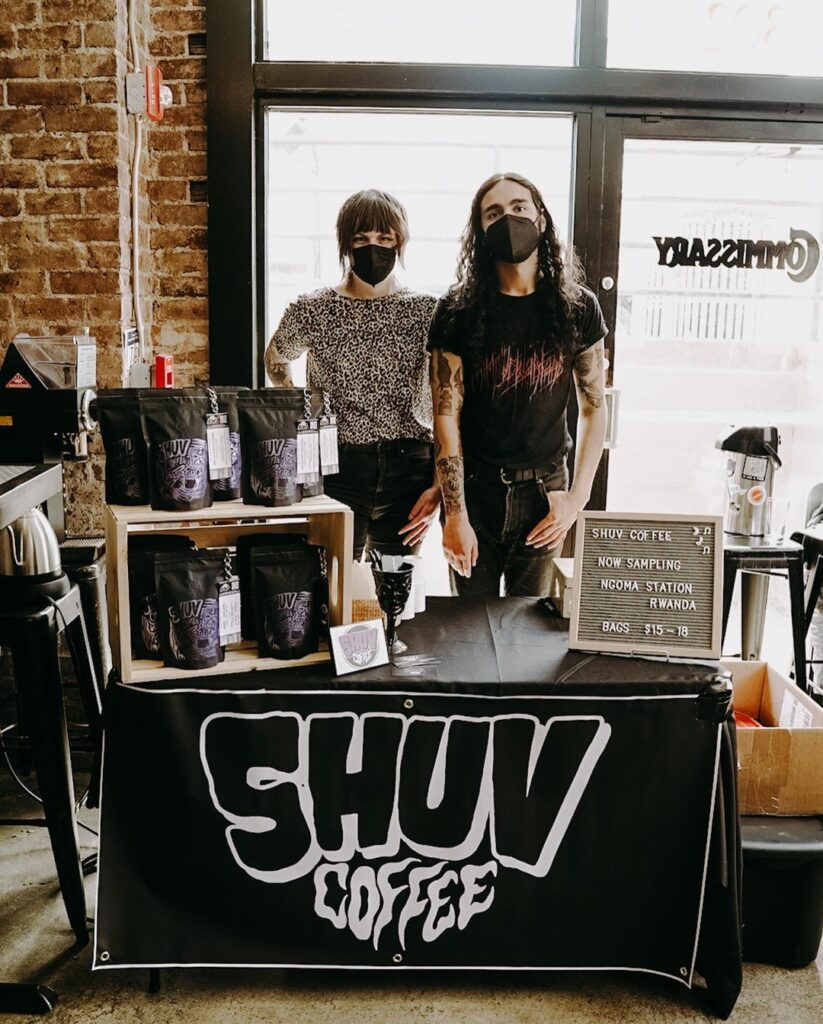
Emery: Hi! My name is Emery Conger. I’m the other co-owner of Shuv Coffee and head up our operations, quality control, and green coffee buying.
How did you two meet? How did you end up starting Shuv together?
Steven: We’ve both been in coffee for almost a decade and worked many of those jobs together. We’ve been best friends for a while now, and, after working together for so long for other companies, we decided, “f*** it, let’s do this ourselves!”
We love specialty coffee but also love DIY (do-it-yourself) and wanted to wrap that into a company where we can have the freedom to express our love and also bring our personal ideals to the table. That meant a vision of coffee that centers producers and prioritizes accessible and equitable practices at origin and in our own locales.
Emery: One thing led to another, and we decided to start Shuv to do something fun and different from what we experienced working in the industry. To put our values at the forefront.
How did you choose the name Shuv?
Steven: Our name came from a skateboarding trick—the pop Shuvit—where you spin your board around 180 degrees before landing back on the ground. We applied it to our motto, “Revolutions in Coffee,” and ran with it. As a company, we want to flip the script of what specialty coffee can mean and inspire a more holistic and inclusive dialogue for all the people involved, not just about the coffee itself.
How did you come up with the idea for your sliding scale/NOTAFLOF program?
Emery: We drew a lot of inspiration from different places, both within and outside coffee. Steve and I were both familiar with the concept of NOTAFLOF from attending and playing punk and hardcore shows over the years. You’d often see a flier posted around town; the acronym would be listed along with the show’s other details. The idea is that no one seeking to attend a show would be rejected from admission based on their ability to pay the cover charge or not.
We wanted to apply this same principle to our coffee at Shuv to uphold our values as a company, as cost can be a significant barrier to accessing specialty coffee.
At the same time, we drew inspiration from coffee companies that have implemented selling their “test roast” coffees at a discounted price point. So when we started having conversations about implementing something similar, it made me think back to the concept of NOTAFLOF, and I thought it would be cool to combine the two. I’m also a nerd-level Crass Records fan, so I took a lot of design liberties from their catalog when designing the label.
How will the program work?
Steven: Essentially, when we have coffee that doesn’t quite make the cut in terms of our quality control standards is put towards NOTAFLOF. That could be anything from a roast profile we want to adjust a bit, a roast curve deviating away from its path, a green coffee beginning to age out—we set it aside for NOTAFLOF.
To save on costs, the bags won’t have the chain, tickets, and screen print we typically use for retail, but we’ll still label them to provide traceability. We then take inventory of our stock each week and put it up for sale on a sliding scale basis on the website. Our lowest price point for NOTAFLOF is what we estimate our average cost of production to be ($6).
All bags that remain unclaimed after a month are then donated for free to local food banks and mutual aid organizations around Indianapolis. If you are reading this and that’s you, please reach out! We’d love to include you the next time we have extra!
How are you able to make costs work?
Emery: The idea is that if one can afford to, they have the option to cover a bit more of the operational costs by paying up to $10. That’s what we initially thought of pricing our test coffees at before we added the sliding scale option. But it’s up to each person to decide what price works best for them.
Another part of this plays into the idea of reconsidering what is “waste” when it comes to coffee and how coffee can be repurposed to give the most value to everyone. Even though something that made it into a NOTAFLOF bag did not quite pass our QC standards, it is still dang good, in our opinion, and a lot of people worked really hard to bring it to you. That is worthy of sharing instead of just throwing it away.
Steven: We see this as a way of someone gaining something rather than viewing it as a business loss. Our branding, packaging, and design are a labor of love, but production materials aren’t cheap. Having a more simplified packaging design for NOTAFLOF makes it so we don’t have to factor as much into our cost of goods.
Do you know any other coffee companies that have programs like this?
Emery: There are many companies and people in coffee that do similar things to this that we really respect. Tim Wendelboe, The Barn Berlin, New Math Coffee from Chicago, and others for selling test roasts before we started doing it, as well as those who offer sliding scale pricing on coffee.
One person that sticks out in our minds is Umeko [Motoyoshi] of Umeshiso Coffee Supply. They sell cupping spoons on a sliding scale, and recently we came across Iluminar Coffee, which offers sliding scale pricing for the coffees they sell. Another local Indianapolis company, Calvin Fletcher’s Coffee, recently rolled out a tiered pricing scale on one of their limited edition coffees so a broader range of people can afford it, and that’s the kind of stuff we love to see!
Anything else you want to add?
Emery: We would love to see programs like this implemented more widely throughout the specialty coffee industry and a general shift away from exclusivity in coffee and towards mutual aid. If you are interested in implementing something like this and have any questions, please contact us! Thanks for giving us the time and space to talk more about NOTAFLOF.
Photos courtesy of Shuv Coffee.
RJ Joseph is a coffee writer focusing primarily on equity, workers’ rights, and structural alternatives to the status quo. She’s been a barista, a roaster, a green coffee grader and lab tech, and finally made coffee writing her full-time gig at Red Fox Coffee Merchants. In her decade in coffee, she’s also run a queer coffee events organization, written a blog on equity in coffee, and run a coffee satire website called The Knockbox. If you see her around, say hi.

